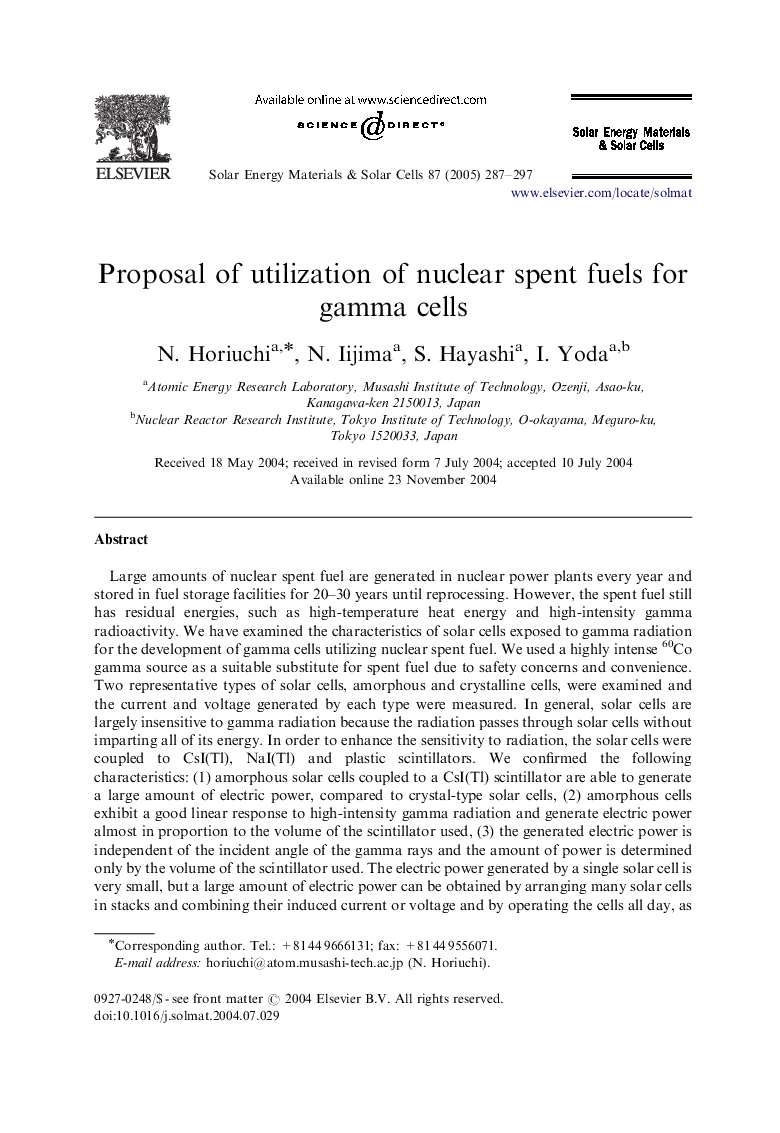| Article ID | Journal | Published Year | Pages | File Type |
|---|---|---|---|---|
| 9618673 | Solar Energy Materials and Solar Cells | 2005 | 11 Pages |
Abstract
Large amounts of nuclear spent fuel are generated in nuclear power plants every year and stored in fuel storage facilities for 20-30 years until reprocessing. However, the spent fuel still has residual energies, such as high-temperature heat energy and high-intensity gamma radioactivity. We have examined the characteristics of solar cells exposed to gamma radiation for the development of gamma cells utilizing nuclear spent fuel. We used a highly intense 60Co gamma source as a suitable substitute for spent fuel due to safety concerns and convenience. Two representative types of solar cells, amorphous and crystalline cells, were examined and the current and voltage generated by each type were measured. In general, solar cells are largely insensitive to gamma radiation because the radiation passes through solar cells without imparting all of its energy. In order to enhance the sensitivity to radiation, the solar cells were coupled to CsI(Tl), NaI(Tl) and plastic scintillators. We confirmed the following characteristics: (1) amorphous solar cells coupled to a CsI(Tl) scintillator are able to generate a large amount of electric power, compared to crystal-type solar cells, (2) amorphous cells exhibit a good linear response to high-intensity gamma radiation and generate electric power almost in proportion to the volume of the scintillator used, (3) the generated electric power is independent of the incident angle of the gamma rays and the amount of power is determined only by the volume of the scintillator used. The electric power generated by a single solar cell is very small, but a large amount of electric power can be obtained by arranging many solar cells in stacks and combining their induced current or voltage and by operating the cells all day, as they are not affected by weather conditions. We concluded that gamma cells utilizing the gamma radiation of nuclear spent fuel can be expected to be useful for electric power generation in the near future.
Related Topics
Physical Sciences and Engineering
Chemical Engineering
Catalysis
Authors
N. Horiuchi, N. Iijima, S. Hayashi, I. Yoda,
